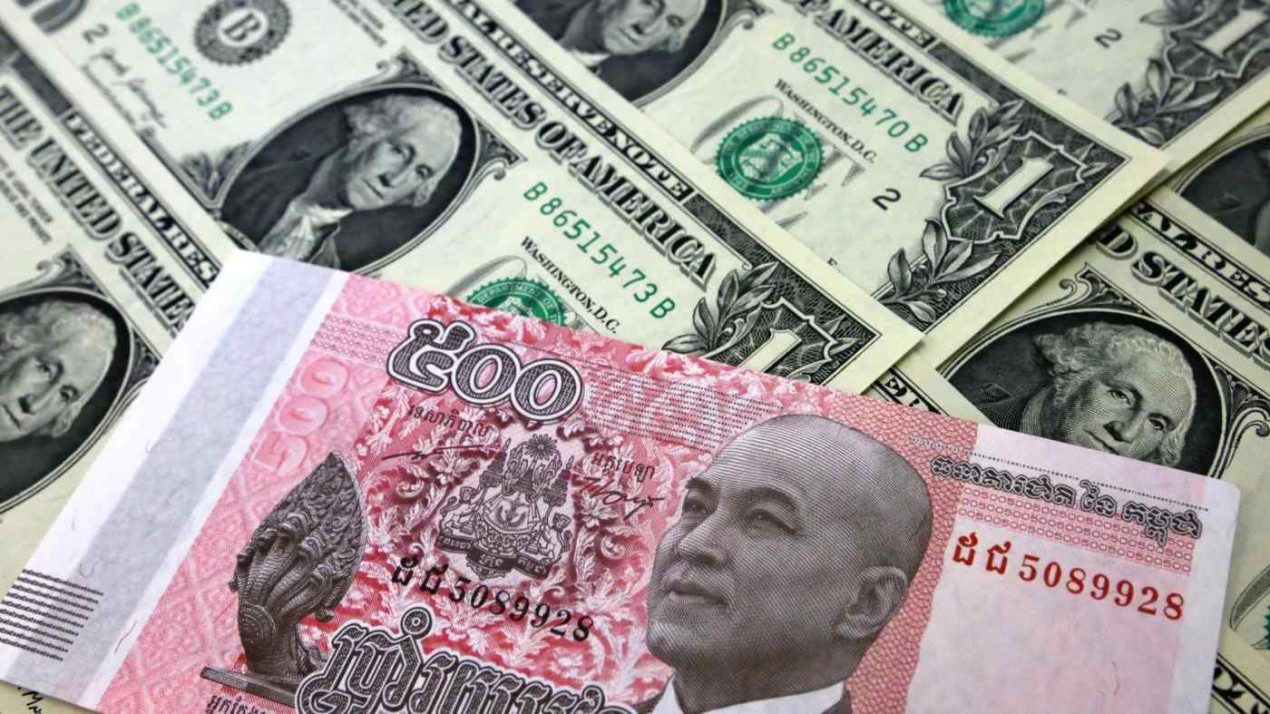
What Does It Take for the Cambodian Economy to De-Dollarize?

Written by: Song Daphea, Junior Student majoring in Political Science and International Relations at Paragon International University
Edited by: Sao Phal Niseiy, Editor-in-Chief at The Cambodianess and Deputy Editor-in-Chief at Thmey Thmey News

Photo Credit: Rie Ishii
My very first experience in Thailand was shocking as I saw my dad rushed to find the currency exchange counter in one busy Thai district. I turned to my dad and asked him: “Pa, why can’t we just pay them in dollars like in our country?”
I remembered he replied with a slight giggle, “In Thailand, only Bahts are allowed here. But in our country, we use dual currencies.”
I asked again, “Then, why can’t we use only one like them?”
Although my dad never really answered my last question, we can find out the answer together in this very article. And we are going to find out how to use only the riel instead of using other foreign currencies. You and I are aware that our country welcomes both the riel and the dollar. But we now should think of how we can start using only our very own money.
Generally, dollarization is never an uninvited guest. Its presence indicated that a particular economy is at risk. In the case of Cambodia, there was a chain of instability and risks occurring one after the other. But dollars stepped foot in Cambodia during the transitional period (UNTAC). It was when up to 1.7 Billion USD poured into our economy through the UN-led missions. That was also when dollars began to earn the trust of our people and made a way to become one of our main currencies.
Economically speaking, Dollarization in Cambodia is a big help through which we could find a better substitute to diminishing inflation, attract FDI, and, ultimately, restore the economy. In addition, the dollar has been aiding our economy, and it eventually allows us to learn to stand on our own.
Nevertheless, persistent dollarization also has significant disadvantages. First of all, we do not have an independent monetary policy. Every dollarized economy generally is influenced by the United States. In other words, if the U.S. were to depreciate its dollars to expand its liquidity or to increase exports, consequently, the Cambodian economy or any other dollarized economies would experience inflation due to the reduction of the dollar value.
Secondly, it is the loss of seigniorage, a term given to describe the difference between the value of the money and the product cost of making it. In other words, seigniorage is the profit that the government gains from generating the money. For example, to produce 10,000 riels, it would cost the government 1000 riel for production expenses. So, the seigniorage would be 9,000 riels. With this gain, the government can allocate it to the national development program based on its priorities. But, when the dollar is highly regulated within our economy, the loss of seigniorage would go up, suggesting that the national revenue is not fulfilling.
Therefore, the question is, "how can we de-dollarize our economy?" There are some practical solutions I would like to raise. First of all, having a great core or a healthy macroeconomic framework is the best starting point. Since Cambodia has had limited control on monetary policy driven by the steady progress of dollarization, it is better to establish credible financial institutions. This practice should be a priority because it will help the people to place their trust in the riel and also for it to circulate with proper regulations and transparency.
Moreover, a closer step to de-dollarizing our economy would be finding a currency to back up for the riel. I refer to the currency that is universally recognized and can be kept as our reserve in case of extreme unexpected events happening to the riel. In other words, we need to find an anchor currency. According to Rasheed J. Griffith and LOR Samnang’s Monetary Policy and Rielization, Cambodia can carefully pick an anchor currency. The authors explored a few options that could be the possible anchor currency for Cambodia, such as the USD, Yen, Yuan, and Asian Monetary Unit. Moreover, the country must also analyze the economic well-being afterward.
Secondly, the exchange rate system is another factor. As Nombuleo Duma stated in his paper for the IMF, the exchange rate system in Cambodia is relatively fixed to the USD. In return, this strategy has stabilized the inflation rate and prompted more investments into the country. However, this explains why Cambodia is still the most dollarized country. When the real exchange rate is stabilized relative to the inflation rate, the dollar is preferable. This action is contradictory to the de-dollarization strategy. On the other hand, if the exchange rate is too flexible, it will cause an uproar in the economy. Therefore, finding a suitable exchange rate policy is necessary.
But what is more important here is the people. We all know that people are a driving factor of the value of the riel. Thus, I think that we can do so much better to navigate the value of our currency. Even though we have been using dollars way too much, we can alter this by embracing a shift in our preferences, habits, customs, and mindset.
When it comes to our habits, I want to stress a little bit here. In some religious rituals, most people tend to make an offering in which replica cars, houses, and paper money are burned for their deceased ancestors. The replica paper money people commonly burn is the dollar. Sometimes, it can be other foreign currencies such as dong, euros, yen, or yuan, but not the riel. It already symbolizes that even the departed prefer the dollars.
Furthermore, shoppings and price tags, as well as most daily transactions, are in dollars. It can serve as significant evidence that the use of riels should be further encouraged among the people in Cambodia. It is time for us to use our currency if we want to achieve proper de-dollarization.
Nevertheless, one thing Cambodia should avoid is forcing de-dollarization. Unlike other countries, the dollar has a long presence and has taken deep roots in our country. Therefore, any reversal in practice is going to be time-consuming, and, of course, enforcing de-dollarization will only end miserably. By saying this, we can study history to see the backfires some countries encountered. Lao PDR, in particular, attempted to impose swift de-dollarization by issuing a decree to make the kip the official currency in every transaction. In the end, the demand for it depreciated remarkably.
Finally, I also want to emphasize that some factors suggest Cambodia is on the right path to de-dollarization. One is the removal of small-dollar banknotes as the National Bank of Cambodia (NBC) has tried to get rid of $1, $2, and $5 banknotes from the economy since 2020.
Last but not least is the establishment of Bakong, a blockchain-based technology that allows users to transfer, peer-to-peer transact, and pay via the digital platform. Apart from de-dollarizing and promoting the riel, Bakong aims to include the unbanked households and boost digital payments. This system has so much to achieve and can even foster digital transactions, cybersecurity, and stricter monetary policy. Indeed, Bakong could be the catalyst for our country to drive a complete de-dollarization.
All in all, dollars have a long presence in our country. Thanks to its existence, we could achieve a lot. However, I believe it is high time to begin regaining our independence in terms of monetary policy. It, of course, is going to be time-consuming and arduous to do so, but there is a saying: "good things take time". So does de-dollarization, which can happen gradually without harshly enforcing. Instead, we should take the time to develop credible financial institutions, find a suitable currency exchange rate, introduce an enduring reserve currency, and instill the spirit of the riel among our people.




